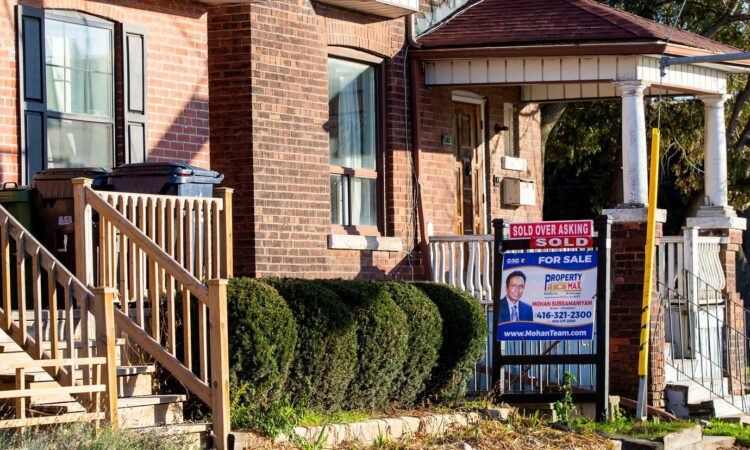
During the pandemic the housing market was on fire as the upheaval changed the way and place many people were able to carry out their work. Lockdowns also changed the perspective of what kind of space Americans wanted to live in. Those that wanted to and could move were aided by ultra-low mortgage rates, but all that demand came at a cost.
Prices for housing soared as shoppers waged bidding wars. A key sign that house prices have risen considerably, in December the Federal Housing Finance Agency (FHFA) upped the backstop mortgage eligibility threshold to allow $1 million homes for the first time.
Now things have cooled off but the average sale price of a home has not come down as much as would-be home-buyers would like due to a lack of supply in the market even as demand has been dampened. Adding insult to injury for those that would like own their own home, interest rates are now more that double what they were when they hit historic lows.
This all means that prospective homeowners will need to make the most of the very best mortgage deals they can find, or face a very expensive mortgage agreement. If you are considering taking the plunge, we take a look at the five types of mortgage available in the US…
Conventional loans
These are loans not backed by the federal government, meaning you are at the mercy of the markets to find a package that suits you. They can be split into conforming and non-conforming loans.
Conforming loans are required to satisfy the standards put in place by the Federal Housing Finance Agency (FHFA), relating to credit, debt and loan size. Non-conforming loans do not necessarily meet FHFA standards, and are typically reserved for larger homes or offered to borrowers with insufficient credit scores.
Jumbo loans
Another type to fall outside of FHFA limits are jumbo loans, which are often found in areas of high-cost real estate, like New York City, Los Angeles and San Francisco. They can allow home-buyers to secure the money needed to buy a more expensive house, but typically require a larger down payment; sometimes as much as 20%.
Government-insured loans
Although the US government does not offer mortgages, it is involved in lending to home-owners. The Federal Housing Administration (FHA loans), the Department of Agriculture (USDA loans) and the Department of Veterans Affairs (VA loans) all provide backing for mortgages.
They are often designed to offer financing to those who would not qualify for a conventional loan and are more relaxed on the credit requirements. However they have lower limits than most other types of mortgages, limiting the options for the buyer.
Fixed-rate mortgages
If you want stability in your housing arrangement, a fixed-rate mortgage may be the best option for you. Fixed-rate mortgages keep the same interest rates over the whole life of your loan, ensuring that the monthly mortgage repayment remains the same.
This allows borrowers to more accurately budget for their other expenses because they will know exactly how much they are going to be spending on their mortgage payments. However, the interest rates are generally slightly higher.
Adjustable-rate mortgages (ARMs)
The opposite of fixed-rate is adjustable-rate mortgages, which have fluctuating interest rates. Often they come with a fixed rate for the first few years but will be subject to market forces after the fixed period elapses.
Typically the terms for these mortgages are expressed in the form ‘X-year/Y-month ARM’ – meaning that the rate will remain the same for the first X years, before being adjusted for inflation every Y months after that initial period.






